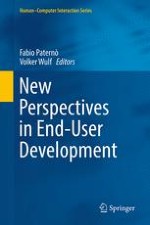2017 | OriginalPaper | Buchkapitel
Semiotic Engineering: A Cohering Theory to Connect EUD with HCI, CMC and More
verfasst von : Clarisse Sieckenius de Souza
Erschienen in: New Perspectives in End-User Development
Aktivieren Sie unsere intelligente Suche, um passende Fachinhalte oder Patente zu finden.
Wählen Sie Textabschnitte aus um mit Künstlicher Intelligenz passenden Patente zu finden. powered by
Markieren Sie Textabschnitte, um KI-gestützt weitere passende Inhalte zu finden. powered by
